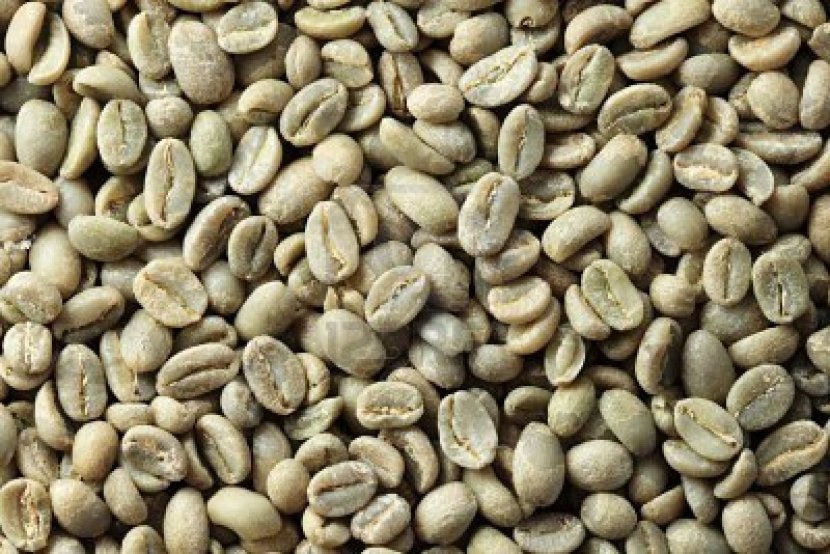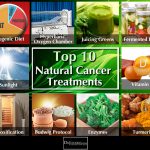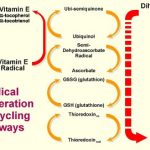Quercetin, not caffeine, is a major neuroprotective component in coffee
Stupid question: what exactly is coffee?
For a person who doesn’t drink coffee (like myself), this is actually a really interesting question. Coffee is a beverage made from ground up roasted beans, which are the seeds of berries from the Coffea plant.
Coffee production also makes for fascinating reading (Click here for more) and why we roast the beans is equally interesting (Click here for that), but they are taking us off the topic here.
There are basically two types of coffee beans: Arabica and Robusta.
Approximately 70 percent of the coffee beans we use are Arabica. Surprisingly, the less popular Robusta actually has twice as much caffeine as Arabica. And caffeine is the stimulant that rewards people for drinking this beverage.
Caffeine is also the chemical that has long been thought to have positive effects on Parkinson’s disease, possibly even reducing the risk of the condition (more on that below).

Fancy a cuppa? Source: Science-All
What does coffee have to do with Parkinson’s disease?
We have previously discussed the enormous contribution that the Honolulu Heart Study has made to our understanding of Parkinson’s disease (click here to read that post). Many of the earliest associations with the condition were found in that large epidemiologic study. One of those findings was that the consumption of coffee reduced one’s risk of developing Parkinson’s disease.
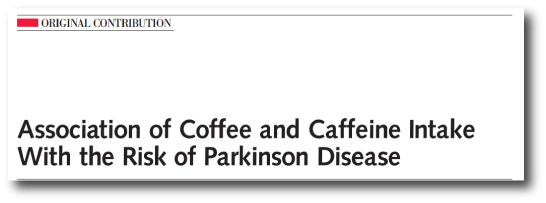
Title: Association of coffee and caffeine intake with the risk of Parkinson disease.
Authors: Ross GW, Abbott RD, Petrovitch H, Morens DM, Grandinetti A, Tung KH, Tanner CM, Masaki KH, Blanchette PL, Curb JD, Popper JS, White LR.
Journal: JAMA. 2000 May 24-31;283(20):2674-9.
PMID: 10819950 (This article is OPEN ACCESS if you would like to read it)
The researchers behind this article analysed the data from the Honolulu Heart Study – an epidemiological study of 8,006 “non-institutionalized men of Japanese ancestry, born 1900-1919, resident on the island of Oahu” – and found that the age-adjusted incidence of Parkinson’s disease declined consistently with increased amounts of coffee intake (from 10.4 per 10,000 person-years in men who drank no coffee to 1.9 per 10,000 person-years in men who drank at least 28 oz/d). This and other findings in their analysis indicated that higher coffee (and caffeine) intake is associated with a significantly lower incidence of Parkinson’s disease.
Subsequent studies have replicated this association, and several have demonstrated the neuroprotective effects of caffeine (click here for a review on this topic).
So what new data has been published?
This is Prof Patrick and Prof Edith McGeer:
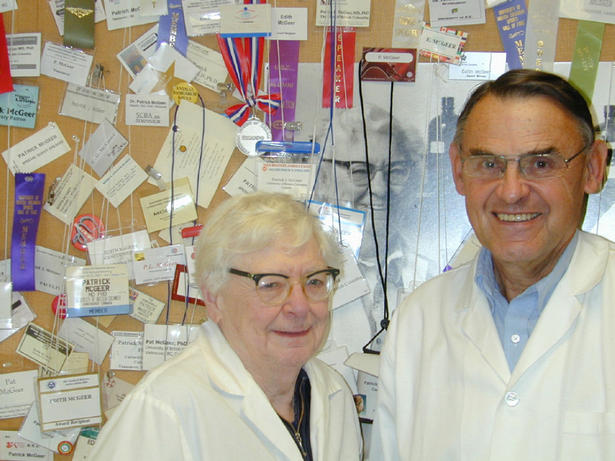
Prof Patrick and Prof Edith McGeer. Source: Mcgeerandassociates
This husband and wife team of scientists are well recognised figures within the Parkinson’s disease research work, having produced many seminal scientific reports. Patrick is a particularly interesting character having played basketball for Canada in the 1948 Olympics and then a politician in the British Columbia legislature (1962-1986).
They are also authors on the article we are going to review today:
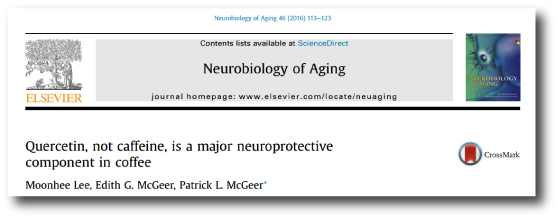
Title: Quercetin, not caffeine, is a major neuroprotective component in coffee.
Authors: Lee M, McGeer EG, McGeer PL.
Journal: Neurobiol Aging. 2016 Jul 5;46:113-123.
PMID: 27479153
As we said above, for the longest time people have believed that caffeine was the active ingredient in the miraculous ability of coffee to reduce the risk of Parkinson’s disease. The researchers who published this report were particularly interested in the neuroprotective role for coffee in Parkinson’s disease and they decided to break coffee down into some of its basic components. Specifically:
- Caffeine
- quercetin
- flavone
- Chlorogenic acids (CGAs)
They tested each of these coffee components on cells (grown in petri dishes) that had been exposed to a toxin, and then assessed cell survival. Curiously, although caffeine did exhibit neuroprotective effects on the cells, it was beaten by the far superior protective effects of quercetin.
What is quercetin?
Quercetin is a flavonoid (a type of plant pigment) that is found in many fruits, vegetables, leaves and grains. Flavonoids are potent antioxidants. Antioxidants scavenge particles (called free radicals) in the body which can damage cell membranes, affect DNA, and even cause cell death. Antioxidants neutralize these free radicals. (For more on flavonoids – click here).
What does this mean?
The results are very interesting, especially if they provide us with a new potential target for therapeutic drug development. It also raises the age-old idea of antioxidants being potentially useful in the treatment of Parkinson’s disease (the previous history of this therapeutic approach has been disappointing – click here to read more on this).
But before you rush out and load up on quercetin, there are a few things to consider:
Quercetin is generally considered pretty safe. Fruits and vegetables are the primary dietary sources of quercetin, particularly citrus fruits, apples, onions, parsley, sage, tea, and red wine.
That said: excessive use of quercetin can have side effects, which may include headache and upset stomach. Very high doses of quercetin can cause damage to the kidneys (doses greater than 1 g per day), and regular periodic breaks from taking quercetin is advised. Importantly, pregnant women, breastfeeding women, and people with kidney disease should avoid quercetin.
EDITOR’S NOTE: If you are considering supplementing your diet with quercetin (or any other potential therapeutic agents) please firstly discuss this change of lifestyle with your medical physician. Information provided here can under no circumstances be considered medical advice.
Having said that we shall keep an eye out for any new research of quercetin and Parkinson’s disease, and report it here.
https://scienceofparkinsons.com/tag/quercetin/




